-
American Goldfinch (0)
-
American Robin (0)
-
Baltimore Oriole (0)
-
Blue Jay (0)
-
Bluebirds (1)
-
Carolina Wren (0)
-
Chickadee (0)
-
Ducks (0)
-
Starling and House Sparrow (0)
-
House Finch (0)
-
House Wren (0)
-
Hummingbirds (5)
-
Northern Cardinal (1)
-
Northern Mockingbird (0)
-
Nuthatch (0)
-
Owls (3)
-
Tufted Titmouse (0)
-
Woodpeckers (0)
A Comprehensive Guide to Bird Feeding (2023)
For some it’s the beach. For others, it might be the mountains. But for many, the hobby of backyard bird watching can be one of the most relaxing activities. You can even enjoy it from the comfort of your own home - maybe in between those visits to the beach!
Let's explore some of the most common questions about bird feeding. These range from those who are just beginning to those who are considering starting.
While it’s not rocket science, it does involve a bit of planning. And of course there is a responsibility to the well-being of your backyard feathered friends. But nothing you can’t handle!
There are 4 things you should try to figure out before running out to buy your first bird feeder:
- What kinds of birds do I want to see?
- Where am I going to put my feeder?
- What kind of seed do I use?
- What kind of feeder should I get?
Let’s get started. First of all…
What kind of birds do I want to see?
After all, the reason for this endeavor is sort of selfish, isn’t it? Yes, you want to take care of your backyard birds. But there’s also a human element. YOU want to SEE them enjoying a snack at your feeder.
Decide what type of birds you want to watch. This will help you choose the right feeder when you buy it for the first time. It will also assist with a decision on what kind of seed to put in it.
Not all birds eat the same thing. Maybe there are certain birds you do NOT want to have in your yard. Trust me, there is not usually a “perfect scenario” where all of the pieces magically fall into place.
Learn a bit about the different bird species native to your area. Learn what they eat and their characteristics. This will definitely help you get started.
For example, a lot of people want to see cardinals and finches; others may want to see woodpeckers. While cardinals eat many types of seeds, woodpeckers would rather have nuts or suet.
Perhaps in the end you will want more than one feeder - and that’s a good thing! Again, think about the birds you see in your neighborhood every day. Try to learn a little bit about them. Then decide which ones you would like to have at your feeder(s).

What kind of seed should I use?
Or should I use seed at all? What about peanuts or suet? After deciding which birds you want to attract to your backyard, the next important step is the food.
There are many options out there, from a single seed type to a blend of several different types of birdseed.
A staple seed in the U.S. is Black Oil Sunflower. This seed has all of the nutrients that most bird species need and enjoy. It is sold pretty much everywhere and you can find it in bags ranging from 5 lbs to 50 lbs. It’s a great all-around choice.
The main drawback with Black Oil is the mess the shells can make on the ground under your feeder. A lot of bird species will sit and eat at the feeder. This means the seed shells and hulls will end up on the ground under the feeder.
Other birds, such as the Tufted Titmouse, take a seed and fly away. They find a hidden spot in a tree or bush to eat it. But there’s no way around it, Black Oil is a little messy.
Did we just say messy? There are seed choices out there advertised as “No Mess”. Typically these seeds or seed blends will consist of shelled seeds.
Think of peanuts. You can go to the ballpark and enjoy them in the shell. Or you can get a dry-roasted jar of shelled peanuts at your local grocery store, like Planters.
Shells make a mess. The peanuts themselves are 100% consumable and don’t leave a mess behind.
Probably the number one “No Mess” bird seed is the Sunflower Heart. These are normally sold whole or in “chips”. They have no shells, therefore, there is little mess left behind. What the perching birds may kick out of the feeder, the ground feeding birds will clean up.
Needless to say, there are lots of birdseed varieties out there. Try to choose one that fits with the types of birds you want to see and your backyard situation.
Some of the blends that offer a variety of seeds in one bag could be a good choice. Experiment! Start with a small bag, see how it goes and perhaps try something different when it runs out.
And one more piece of advice with seed. In most cases, you get what you pay for.
The less expensive seed is often lower in quality. It may have a bunch of unwanted stuff like small sticks and other dirt mixed in. It may also have a lot of “filler seed”, like millet or milo.
In contrast, the “No Mess” birdseed options are usually more expensive compared to a regular bag of Black Oil Sunflower seeds. But remember, you’re paying for all seeds, no shells. In the end, the choice is yours to make.
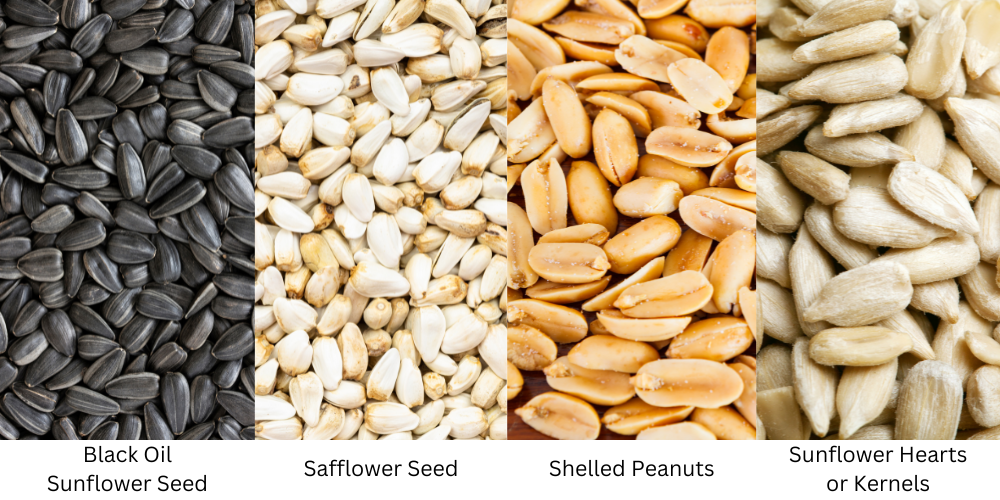
What kind of feeder should I get?
What a daunting question. There are so many sizes and shapes and colors to choose from.
A suggestion is to do a little bit of research first. You know the types of birds you want to see and you know what you’d like to feed them. Based on that information, you can easily find a feeder that should work for you.
Remember, bird feeders come in a wide range of prices, just like the different seed choices we discussed earlier. Most of them will still work, and suit your needs for a while, no matter their price.
The cheaper ones, however, tend not to last as long. Do you want to buy a new feeder every 6 months or every year? Or would you like a feeder that will last a good long time? Again, that is completely up to you.
Let’s spend some time diving into this feeder thing.
First of all - materials and construction. Tube feeders are normally made using clear plastic or acrylic for the tube part. This easily allows you to see the seed level in the tube. But the lid, perches, seed ports and base could be plastic or metal.
The metal ones will last a lot longer. Also metal perches and seed ports are definitely more “chew-proof”. Think squirrels.
Tray, platform and hopper feeders are typically constructed from wood or poly lumber. Cedar wood can be a good choice if you’re going for a more natural looking feeder. Poly lumber is becoming more popular and is one of the most durable and long lasting materials in this market.
Poly lumber is a sustainable product made mostly from recycled milk jugs and other reused plastic materials. It is guaranteed to not crack, fade or split - even in the worst of weather conditions. It is also super-easy to clean and maintain.
Of course, along with all those good things, it does come with a higher price tag. But when you consider the advantages, in most cases it is very worthwhile.
Here is a list of some of the more popular feeders available on the market today:
- Tube feeder
- Hopper feeder
- Platform or tray feeder
- Suet
- Window
- Seed cylinder
- Squirrel-Proof
- Nyjer
- Ground
- Bluebird / Mealworm
But let’s grab one of these from the list and talk about it for a minute.
The platform, or tray feeder, is one of the simplest types of feeders to consider.
The name pretty much describes it. It’s simply a tray (or platform) where you put bird seed. It has a flat bottom and 1”-2” high sides to hold in the seed. Birds can either sit on the sides and eat seeds, or they can actually go inside the tray to enjoy their favorite snacks.
Some tray feeders hang from a cable and are completely open-air. Others can have a roof with side supports. These are often referred to as “Fly Thru”. Some of these can be post-mounted if desired.
Still others will have legs attached and sit on the ground. The JCs Wildlife platform feeders are all made from poly lumber. They also all have a removable seed tray with a handle and drain holes.
Tray feeders come in a variety of colors and sizes. They are one of the most versatile of all feeder types. You can put pretty much ANY type of seed in them, including nuts and fruit.
Because of their open design, almost every type of songbird imaginable can feed from them. They also give you a great, unobstructed view of the birds as they eat. The simple design also makes them super-easy to fill, clean and maintain. The platform/tray feeder is a great choice for someone who’s just getting started.

Where should I put my bird feeder?
This is the last of those 4 key questions that were listed earlier. Now that I have my new feeder, where does it go?
Remember earlier we said that backyard bird feeding isn’t just for the birds. Most people wouldn’t be doing it if they didn’t want to actually see the birds at their feeders. Find a spot for your feeder that is easy to see and access. Make sure you can comfortably reach it for regular maintenance.
Most feeders are meant to be hung or mounted. If your feeder has a hanger, it can be hung from a tree branch. There are also branch hooks sold to assist with hanging from a higher, more sturdy branch.
It can be hung from a shepherd's hook. It can also be hung from a bracket attached to a fence post, side of a building, or deck railing. Other larger feeders can be made to mount to a pole or a post. Still others can simply be placed on the ground.
Try to find a place in your yard or landscaping that is not a high traffic area. Birds may not be comfortable at your feeder if there is a lot of activity nearby, such as pets or children. Constant movement in the vicinity can be frightening for them.
You may choose to place your bird feeder in the landscaping or in a more open area. If possible, having a water source like a bird bath nearby can help attract birds to your feeder.
Just remember from our earlier discussion that there is the potential for a bit of mess under and around the feeder. Please be prepared for that.
If you place your feeder in the landscaping, it is a good practice to remove the mulch from under the feeder from time to time in order to keep the area clean and fresh. If seed shells are allowed to collect over a long period of time, it could invite unwanted guests like mice.
One final concern with feeder placement is windows and potential window strikes. Window feeders are mounted directly to the window. Some landscaped areas around your house may be in very close proximity to windows.
This is generally not a problem. The birds will be flying to your feeders. It’s possible that they may bump a window from time to time, but the possibility of them flying full-tilt into a window because of a feeder is rare.

How much does it cost to feed backyard birds?
This is a question that is not often addressed, yet it can be important.
You may already have a budget in mind. You may want to keep it as inexpensive as possible. Or you may wish to go “all in”! Please keep in mind that costs can vary greatly in the quality of both feeders (wood vs. poly) and seed.
The intent with the short list below is to provide you with a ballpark estimate of how this little venture may affect your pocketbook. Keep in mind that you can always add accessories to the mix like rain guards, baffles, etc. These things will obviously increase the cost.
This list will deal with the bare necessities and be based on a 5lb to 10lb bag of “middle-of-the-road” quality seed. Here we go:
- Platform feeder + seed = app. $50
- Hopper feeder + seed = app. $85
- Tube feeder + seed = app. $40
- Window feeder + seed = app. $45
- Suet cage feeder + small suet cake = app. $20
- Seed cylinder feeder + small seed cylinder = app. $40
- Sturdy pole kit to mount a feeder = app. $57
- Pole system with baffle and feeder hangers (attach up to 4 feeders) = app. $130
When should I feed the birds?
This is a common question and one that may not have a real cut and dried answer.
Some people (like us) feed birds year round. Some people quit feeding in the summertime because they feel birds already have enough to eat and offering them seed in a feeder is unnecessary. Others stop feeding in the winter simply because it is too difficult for them to get out into the elements to fill their feeders.
None of these practices are necessarily wrong.
Birds are genetically hard-wired to survive and find food on their own. They’ve been doing this for hundreds of years! Feeding them in your backyard will augment their daily feeding regimen, but it won’t replace it.
There are, however, a few things to consider if you want to optimize your efforts.
- Most birds eat insects. If it gets cold enough in your area during the winter season for bugs to not be present, the birds will appreciate a snack from your feeder.
- In the spring and early summer, birds will expend a lot of energy caring for their young and raising a family. A little extra help during the breeding season is always appreciated!
- Migration. A lot of birds migrate for hundreds and even thousands of miles twice a year. They need a place to stop and refuel before resuming their long journey - think early spring and late fall.
- If your area is in a drought or has flooding conditions, this might lead to an upset in your local birds’ environment. Offering seed during tough times can be helpful.
What kind of upkeep is needed when feeding birds?
Proper feeder maintenance and upkeep is very important for both the feeder and the visiting birds. The good news is that taking care of your bird feeder is actually quite easy. Here’s a quick list of best practices to follow.
- Regularly monitor the seed in your feeder. If it gets clumpy or moldy, throw it out and refill with fresh seed. If this happens frequently, consider not completely filling the feeder each time. This will help prevent the seed from going to waste.
- Check the condition of the feeder itself. If it’s dirty, clean it. Most of the time bird feeders can be adequately cleaned using water from a garden hose and a brush. Some may even be dishwasher safe!
- When cleaning the feeder, also check the general condition. Is everything tight and working properly? Are there defects which could harm a bird?
- Check the area under and around your feeder. If shells and hulls are piling up, dispose of them. And if need be, replace the mulch.

What should I do if birds aren’t visiting my feeder?
First and foremost, if you have a new feeder or you've moved an existing one, it's important to give the birds some time to get used to its presence. It may take birds 2 weeks to become familiar with the feeder. They must feel safe in order to explore it.
If they’re still not coming, check your seed. Make sure it’s fresh and free from mold or other contaminants.
Sometimes the environment can be a factor. Try adding a water feature like a bird bath, or moving the feeder closer to an existing bath.
Birds can be skittish creatures. Is there cover nearby? A bush, tree or hedge row?
Ever watch a bird closely when it lands on a feeder? It spends a lot of time not looking down at the seed, but UP in the air above its head. Birds are constantly on the look-out for predators.
Another consideration other than water when thinking about your backyard territory is what type of plant life is there. Remember, BUGS are the main source of food for lots of bird species - especially when raising their young.
Native plants and trees spawn native bugs, which in turn feed the birds. If a bird is naturally attracted to your backyard (water and insects), it will be more likely to visit your feeder.

Where and how do I store my bird seed?
Yet another great question! Most bird seed comes in a paper or plastic bag. Some of the plastic bags are even resealable.
Bird seed should optimally be stored in a cool, dry place out of the sun. If you don't have a large amount of seed to store and plan to use it up quickly, an outdoor storage shed or bin should be enough. The main thing is to keep it dry and away from varmints.
An “old school” metal trash can with a lid can be a great choice. It could be placed in a shed, on a deck or on your patio.
A 10lb-20lb bag of seed will normally fit in a 5-gallon bucket. You may even have one of these lying around someplace. If it doesn’t have a lid, you can find universal lids for 5-gallon plastic buckets at many stores. These lids usually cost around $2.
Do you drink orange juice or apple juice? Most times juice comes in a half-gallon plastic just with a screw-on/off lid. Simply transfer bird seed from your bucket or bin into the juice jug using a funnel.
This provides an easy fill container to carry around your backyard. It’s also easy to store - even in your house on a pantry shelf!
One more thing to keep in mind. Bird seed is not milled or bagged in a human “fit for consumption” location. If you keep seed stored for a long time, you might occasionally find bugs or moths in it.
These aren’t necessarily harmful to the birds, but you probably don’t want them in your house. If you can’t seal your seed container, try to store it somewhere other than inside your home.
How do I know I’m not doing anything to harm the birds?
This is a very important thing to consider. It’s okay to be a little selfish like we talked about earlier. You’re putting a feeder out there so you can watch the beautiful birds and get enjoyment from it.
At the same time, you also want to make sure nothing you do will hurt them in any way. In most cases, you should be just fine. But here are a few common concerns.
- Can I feed the birds too much? Not really. Ever hear the old term “you eat like a bird”? Birds do not gorge themselves on feeder seeds until they’re so full they can’t fly. They know when enough is enough.
- Can I feed birds during migration? Feeding during spring and fall migration will not stop a bird from migrating. They are hard-wired to migrate. There can be a few environmental factors that could alter a bird’s typical migration pattern such as storms, strong winds, lack of a natural food or nesting spot. Your backyard bird feeder will not affect migration.
- What if I go on vacation and can’t feed my birds? No problem! Go forth and enjoy yourself! Again, birds will naturally feed on instinct. They do not require your feeder seeds to survive. You may feel sad that you aren’t at home to feed them for a few days, but they’ll be okay!
- Can my pets harm the birds at a feeder? Typically not, but it’s something you should keep an eye on. Dogs don’t raise as many concerns as do cats. If your cat lives outside or spends time outside, birds at a feeder can become “fair game”. You may want to place your feeder at a high location that is out of the cat’s reach. It’s no secret that cats will go after birds, so if you are in this situation, please monitor it closely.
How can I discourage unwanted guests from visiting my bird feeders?
Enter the SQUIRREL! What a cute, perky little critter! Wait a minute… What’s that squirrel doing on my bird feeder? Ugh!
Yep, it’s a real thing. Squirrels love bird seed. And peanuts. And even the occasional mealworm.
How can I keep them (and other varmints) away from my bird feeder? It’s not always easy.
If squirrels are your concern, there are many ways to TRY to discourage them - too many to list here. Just know that if you are serious about wanting to keep them from eating your bird seed there are options. Squirrel-proof feeders, pole systems with baffles, etc.
You can also try feeding the squirrels in a different part of your yard away from bird feeders. Sometimes offering them their own snack will (mostly) keep them away. Additionally, there are some bird seeds, like Safflower for instance, that squirrels don’t like.
Another unwelcome visitor to backyard bird feeders is actually of the feathered variety.

They are beautiful birds in their own right, but they are inherently feeder bullies and hogs. This non-native, invasive bird species can present a lot of issues at your bird feeder.
European Starlings normally travel in flocks (especially in the winter) for safety and security (in numbers). They will “attack” your bird feeder in mass, devouring every crumb and morsel in an amazingly short amount of time.
They not only bully the other songbirds out of their way, but they fight among themselves, squawking and flapping their wings. People in some places have real problems with these bully birds. Luckily it’s not usually a year-round, every day situation. They tend to be more aggressive in the winter months.
Starlings can be a hard pest to deal with. There are caged feeders that won’t allow them in and also certain types of seeds that they are not really fond of. But options are somewhat limited in controlling them 100%.

I’ve put out a feeder and I’m seeing birds! What’s next?
Nothing! Sit back, relax and watch the nature show in your own backyard!
Or…….
You’ve started out on a cool journey. But there are ways to make it even better! How about considering some of these suggestions?
- Educate yourself on what you’re seeing. Read blogs and books. Check out cool bird websites like Audubon and Cornell University Lab of Ornithology.
- Grab your smartphone and take it outside with you! Apps like Merlin, eBird and iBird provide a wealth of information on bird identification and facts.
- Facebook Groups. I guarantee you there is at least one Facebook birding group in your area. Members post their own bird photos and provide lots of info on bird ID and birding hot spots in your location.
- Take bird photos and share some of your own shots.
- Grab a nice set of binoculars and bring the backyard birds up close and personal.
- Invest in a second, third, or even fourth feeder. Try various types of seeds, such as nuts, suet, or fruit. Observe the results.
- Set aside time during peak bird activity to watch your feeders. Try just after sunrise or at dusk. You will learn which birds are the first to wake up in the morning. You will also find out which birds linger at your feeders until nightfall.
- Start making a list of the birds you are seeing and the birds you want to see. Become a certified Bird Nerd!
- Involve the entire family! Turn bird watching into an educational experience.
- Above all else - HAVE FUN!!

Pretty neat, huh? And something you can easily accomplish in the space of your own backyard!
The bird feeding experience can be as simple or as extravagant as you want. It can cost you very little or you can dump some extra cash into it if you so choose. You can enjoy it year round, whenever you want. And it can be an educational venture for the entire family.
Still wanna go to the beach? Yeah, probably so. Remember, you can bring relaxation to your own backyard. This will make your favorite feathered friends happy.
Happy birding!
No comments
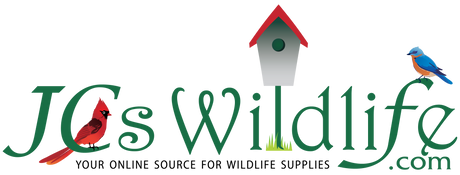
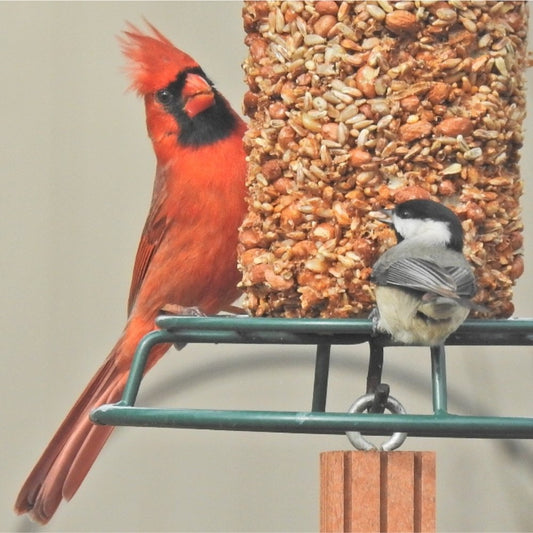
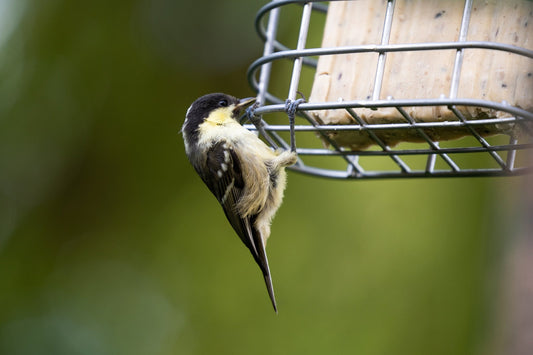
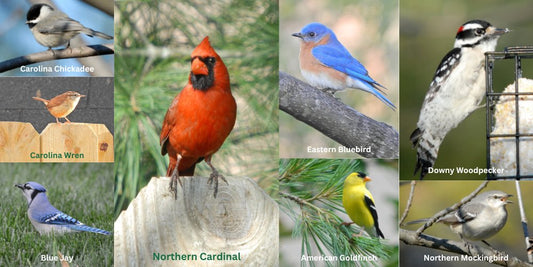
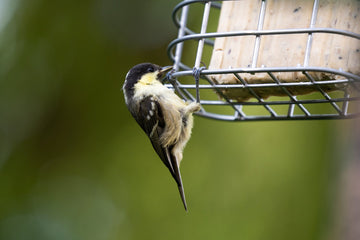


0 comments